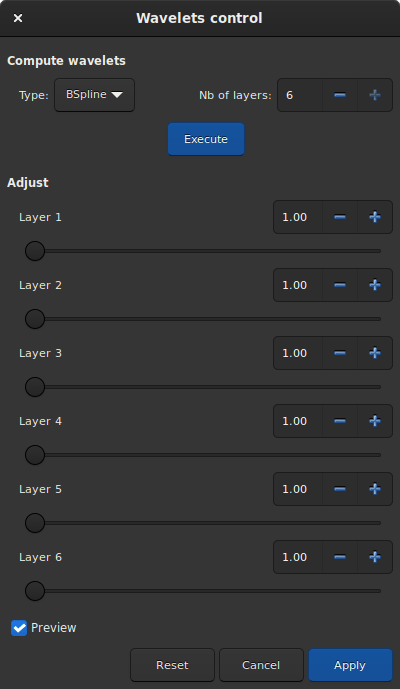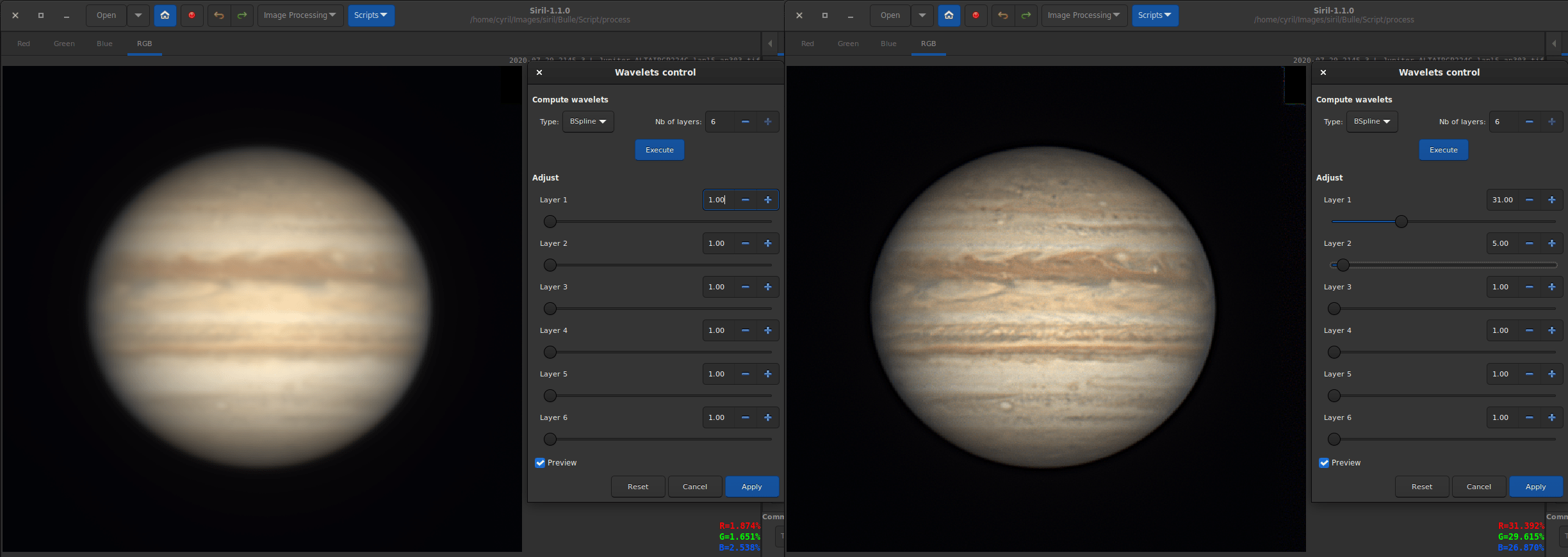À Trous Wavelets Transform
A wavelet is a function at the base of the wavelet decomposition, a decomposition similar to the short term Fourier transform, used in signal processing. It corresponds to the intuitive idea of a function corresponding to a small oscillation, hence its name.
There are many types of wavelet functions that have their own names, as shown in the figure below.
An example of four different types of wavelets.
The À Trou Wavelet Transform used in Siril performs decomposition of an image into a series of scale layers, also known as wavelet layers. These layers can be extracted with the Wavelet Layers extraction tool, however here, they are used without being visually accessible. In general, this algorithm is widely used at the end of a planetary image stack. Because the noise is exclusively contained in one of the wavelet layers, it is possible to bring out the details of the image by containing the noise amount.

Wavelet tool dialog box.
The first thing to do is to click on the Execute button in order to calculate the wavelet layers using the parameters defined above, such as:
Type: There are two types of algorithms possible: Linear and BSpline. The latter will usually be chosen, even if it is a bit slower.
Nb of layers: Number of wavelet layers that will be used. 6 is the maximum number of layers that can be defined. To work on a larger number of layers it is possible to use the command line explained below.
Then, each layer has a slider that allows to modify the contrast of this layer. If less than 6 layers have been created, then only the corresponding sliders will be active. A value greater than 1 improves the details while a smaller value tends to reduce them.
This is a liveview tool. The changes are displayed in real time and you have to click on Apply to validate them. Clicking on Reset resets all the sliders to 1, and thus cancels any transformation in progress.

Wavelets applied on a Jupiter image (courtesy of J.-L. Dauvergne). The image on the left is the raw image of the stacking output, while the image on the right is the same image on which wavelets are applied.
Siril command line
wavelet nbr_layers type
Siril command line
wrecons c1 c2 c3 ...
The example given in the image above would be written in the command line as follow:
wavelet 6 2
wrecons 31 5 1 1 1 1